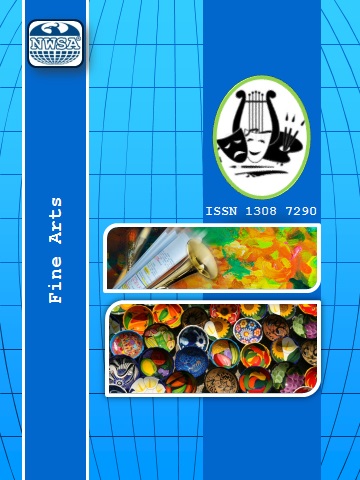ÇOCUK TİYATROSUNDA MÜZİĞİN İŞLEVİ SÖZLÜSÖZSÜZ MÜZİK KULLANIMI
Ayhan HELVACI 1
,
ELIF BAĞCI2
Bu çalışmada Çocuk Tiyatrosunda müziğin işlevi, sözlüsözsüz olarak müziğin kullanımı Hasan Erkekin Sevgi Çemberi, SemaErbil Göktaşın Büyülü Göl, Fikret Terzinin Miyhavlar Tiyatrosu, Nurullah Kalkanın Kaç Tilki Kaç, Ülkü Ayvazın Teneke Şövalyeler, Rainer Hachfeldin Ketçaplı Spagetti ve Volker Ludwigin Bella, Patron ve Bulli isimli oyunları üzerinden ele alınmıştır. Çocuk oyunlarında müziğin işlevi ve kullanımının ortaya çıkarılması amacıyla Giriş Müziği, Karakter Tanıtmak, Durum Tanıtımı, Atmosfer Yaratmak, Duyguları ifade Etmek ve Final Müziği olarak altı başlık altında bakılmıştır. Örnek oyunlar üzerinden elde edilen bulgular sonucunda; müziğin çocuk oyunlarında çok önemli bir işleve sahip olduğu, genellikle sözlü müziklere (şarkılara) yer verildiği, seçilmiş olan başlıklarda çocukların algı düzeyi, dikkat süreleri, hikâyeyi takip etme ve düşünme becerileri gibi faktörler göz önünde bulundurularak kullanıldığı ve bir unsurdan ziyade bütünün bir parçası olduğu görülmüştür.
Keywords
Çocuk,
Çocuk Tiyatrosu,
Oyun,
İşlev,
Sözlü-Sözsüz Müzik,
 +90(535) 849 84 68
+90(535) 849 84 68 nwsa.akademi@hotmail.com
nwsa.akademi@hotmail.com Fırat Akademi Samsun-Türkiye
Fırat Akademi Samsun-Türkiye
